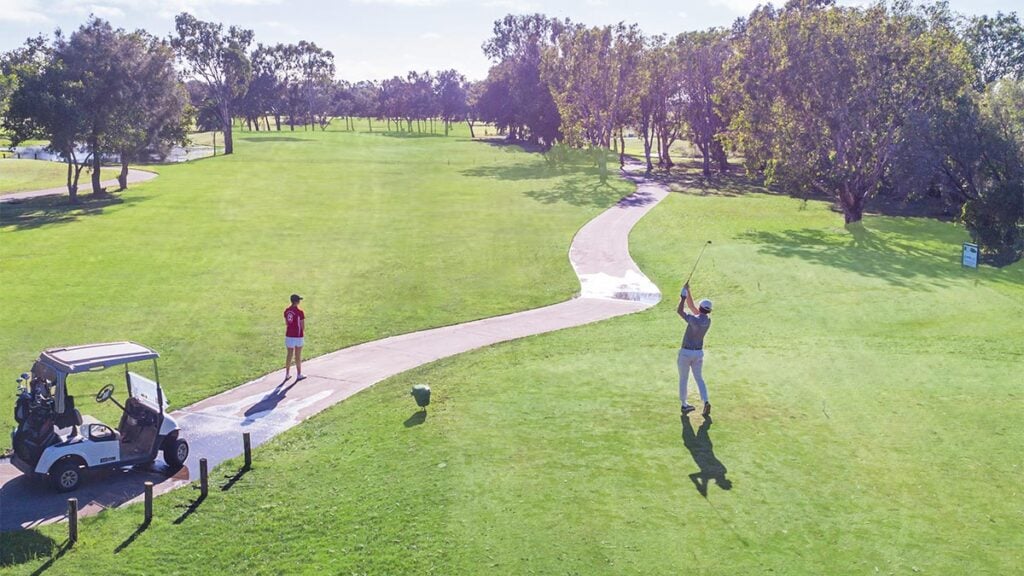Welcome to Lie Detector, a Golf Digest+ series where we use an ultra-slow-motion camera to help you identify and properly execute shots from various lies. Different lies, whether they be in the fairway, rough or bunker, require different techniques, but first, you must get better at identifying the lie that you have.
You’ve missed the green and have a short shot off a tight lie. How you should hit the pitch or chip shot and how you can expect the ball to come out varies greatly whether you’re hitting into the grain or down grain. What’s grain? Simply, “the direction in which the grass is growing,” says one of Golf Digest’s Best Teachers in New Jersey Nick Bova.
Here’s how to identify and navigate an into-the-grain fairway lie around the greens.
Where it often happens
Around the greens on tightly mown run-offs or fairway. Some types of grass, like the Bermudagrass found in warmer climates, have more grain than other grasses, like bent, which is popular in northern climates.
How to identify it
There are two main strategies for identifying grain: 1) looking at the shade of the grass or 2) taking practice swings to “test” the grass.
2-MINUTE CLINIC: HOW TO HIT TRICKY INTO-THE-GRAIN CHIPS
“Bermudagrass is going to grow with the sun. It might be down grain in the morning and into the grain in the afternoon,” Bova says. “The grain on bent grass is more driven my how it’s mowed.”

Christian Iooss
If you’re standing behind your ball, looking at the hole, the grass on an into-the-grain lie will appear much darker compared to a down-grain lie. You can also bend down, get close to your ball and try to see if the tips of the grass are growing toward or away from the target. If the grass is growing away from the target, you’re into the grain.
If you can’t decide from looking at the lie, take a few practice swings next to the ball, Bova says. “When it’s into the grain, you’ll definitely feel the clubhead hitting and grabbing more into the grain,” he says. “Down grain, the club almost skids right along it.”
Notice how in the slow-motion video, the grass grabs and stops the clubhead right after impact. Take a practice swing to see if the club interacts with the turf in this way.
“In the South in the wintertime when the grass is dormant, the grain will be harder to see,” Bova says. “You have to utilize more of those practice swings to create an understand of what the lie is going to be.”
What it will do to the club and ball
Expect the club to dig more when it hits the turf, as the blades of grass are grabbing the clubhead when it makes contact. You can make set-up adjustments (like lifting the heel of the club off the ground, explained here) to minimize this interaction, but Bova says to expect some digging.
On an into-the-grain fairway lie, Bova says the ball will often “come out a little bit higher with less spin,” as the ball tends to hit farther up the face when the club digs into the ground.
For more on into-the-grain chips, check out our 2-minute clinic on how to hit these tricky shots, below.
Your browser does not support the video tag.
Golf Digest Logo
5-step formula for tricky into-the-grain chips 2-minute Clinic EXPLORE NOW
This article was originally published on golfdigest.com



